| ••••• |
| |
In the beginning... |
| |
The Bible

|
The original, most important, most meaningful and accessible Kabbalah text is none other than THE TORAH:
The Five Books of Moses:
Genesis, Exodus, Leviticus, Numbers, Deuteronomy
The Prophets:
Joshua, Judges, Samuel, Kings, Isaiah, Jeremiah, Ezekiel, Hoshea, Joel, Amos, Ovadiah, Jonah, Michah, Nachum, Habbakuk, Tzephaniah, Chagai, Zechariah, Malachi
The Writings:
Psalms, Proverbs, Job, Daniel, Ezra, Nehemiah, Song of Songs, Ruth, Lamentations, Ecclesiastes, Esther, Chronicles |
|
| |
First step on the ladder of ascent... |
| 1 |
Derech HaShem:
The Way of God
by Rabbi Moshe Chaim Luzzatto |
| |
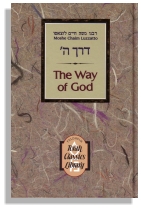
Translated and Annotated by Rabbi Aryeh Kaplan
Published in the Torah Classics Library by Feldheim Publishers |
This great classic provides a clear, concise, authoritative statement of the fundamentals of Jewish belief by the outstanding Kabbalistic genius, Rabbi Moshe Chaim Luzzatto, RAMCHAL (1707-46). That other giant of the Kabbalah, the Gaon of Vilna, said he would have walked all the way to Italy if he could have sat at the feet of RAMCHAL!!!
THE WAY OF GOD was written by RAMCHAL as the first "step" of a "ladder" of ascent and initiation made up of a series of volumes taking the student to deeper and deeper levels of understanding of the Kabbalistic system and its concepts.
The second "step" on the ladder is #6 The Knowing Heart below, while an English translation of the top step of RAMCHAL's ladder, 138 Openings of Wisdom is currently under way.
As the first step on the ladder, THE WAY OF GOD systematically explains the underlying worldview of the Kabbalah in clear terms, presupposing no prior knowledge and without the use of Kabbalistic terminology. This work provides the student with essential tools for understanding the worldview and ideas found in the Zohar, the writings of the ARI and other Kabbalistic and chassidic works.
Topics covered include:
The Creator • Purpose of Creation • Man • Souls • Angels and other transcendent Forces • Providence • Israel and the Nations • The Soul • Inspiration • Prophecy • Service of God • Prayer and Devotion
The Way of God should be studied in conjunction with the same author's universally acclaimed masterpiece, Mesilas Yesharim — Path of the Just, the classic step-by-step explanation of the Torah pathway of self-purification and devotion upon which the true Kabbalah is based. |
| |
The Ten Sefirot |
| 2 |
Sha'arey Orah:
Gates of Light
by Rabbi Joseph Gikatilla
"The key to the mystical teachings" — ARI
Translated by Avi Weinstein
Published in the Bronfman Library of Jewish Classics by HarperCollins Publishers |
| |
|
Written by the outstanding Kabbalistic giant Rabbi Joseph Gikatilla, who lived in Spain from 1248-1323, GATES OF LIGHT was considered by the ARI to be the key to the mystical teachings. The work consists of ten chapters explaining each of the Ten Sefirot in turn, their associated qualities and Divine Names, and the terms and images which allude to them in the Bible, Zohar and other Kabbalistic texts.
GATES OF LIGHT is a fascinating, beautifully written, deeply reverential and inspirational work that unlocks the hidden meaning of many biblical passages as well as providing the keys to the Kabbalistic system of devotion, prayer and meditation. |
| |
"The Radiant Light" |
| 3 |
The Zohar
Living source of the wisdom of the Kabbalah |
| |
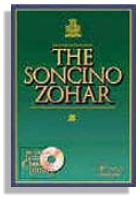
"Study of THE ZOHAR can give you enthusiasm for all your Torah studies.
The very language of THE ZOHAR is so holy, it can motivate you to serve God"
-- Rabbi Nachman of Breslov
|
After the Bible, THE ZOHAR is the most important work of the Kabbalah. THE ZOHAR is cast in the form of a lengthy midrashic commentary on the Five Books of Moses. The commentary is made up of mystical discourses by Rabbi Shimon Bar Yochai and other members of his circle of companions. THE ZOHAR is a veritable sea of Kabbalistic wisdom, containing stories, homilies, allegories, graphic metaphors, esoteric explanations of the Bible and the mystical worlds, discussions of the prayer services, Sabbath, festivals and other commandments.
Many pious Jews would read THE ZOHAR even without comprehension in order to receive something of its great holiness. While many portions of THE ZOHAR are extremely recondite, there are sections that speak much more directly, offering all kinds of wisdom, insight and moral guidance.
Jews universally celebrate the anniversary of the death of Rabbi Shimon Bar Yochai, on LAG BA-OMER, the 33rd day of the Omer Count, on the 18th day of the Hebrew month of Iyar (May).
Today various translations of the whole of THE ZOHAR or excerpts are available, making it possible for everyone to experience the great light of this holy work. |
| 4 |
The earliest Kabbalistic text
Sefer Yetzirah:
The Book of Creation |
| |
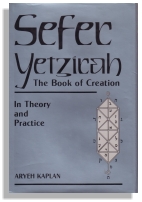
Translated with commentary
by Aryeh Kaplan
Published by Samuel Weiser, Inc.
York Beach, Maine
|
SEFER YETZIRAH — THE BOOK OF CREATION is the most ancient book of the Kabbalah and its very foundation. This work contains teachings of the patriarch Abraham about the Divine Names, the Ten Sefirot, the Twenty-Two Letters of Creation, Four Elements (fire, air, water and earth), seven planets, twelve constellations, the days, hours and seasons and their associated body parts.
The late Rabbi Aryeh Kaplan's translation and brilliant scholarly commentary on Sefer Yetzirah, based upon the classic commentaries, have made it possible for English-speaking students to catch a glimpse of the awesomely profound depths and far-reaching implications of this work, even when they feel their comprehension is limited. Rabbi Kaplan's masterly analysis of the text, which presents all the relevant background information, brings out the many ramifications of Sefer Yetzirah in the fields of philosophy, metaphysics, physics, mathematics, meditation and devotion.
To study Rabbi Kaplan's commentary, you must be willing to tackle some challenging materials and difficult concepts, for such is the nature of Sefer Yetzirah. Even a cursory glance at some of the pages of this landmark work should be enough to deepen your respect for Sefer Yetzirah and the Kabbalah in general. |
| |
Approaching the Kabbalah of the ARI
The "Lurianic" system of Kabbalah is set forth in EITZ CHAIM — THE TREE OF LIFE and other writings containing the teachings of Rabbi Yitzchak Luria — the ARI. The "Lurianic" system provides essential keys for the interpretation of THE ZOHAR as well as being the foundation of all subsequent Kabbalistic schools, including Chassidut.
Very few of the writings of the ARI are available in English translation. Even for those who know Hebrew, study of the original texts is difficult, because although they are not complex stylistically, they require background knowledge and familiarity with a complex array of concepts.
A number of secondary works can aid in gaining familiarity with fundamental concepts of the Kabbalah of the ARI. This will be of value in approaching many Kabbalistic and chassidic texts.
Suggestions 5-7 are works that explain the general contours of the ARI's system and its main concepts. |
|
• |
| 5 |
Introduction to the philosophy of Chassidut and the Lurianic system on which it is based
The Philosophy of Chabad:
Rabbi Schneur Zalman of Liadi Vol. 2
by Rabbi Nissan Mindel |
| |
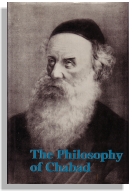
published by
Kehot Publication Society
Brooklyn, New York
|
The teachings of Rabbi Schneur Zalman of Liadi (1745-1813), founder of the Chabad Movement, are rooted in the Kabbalistic system of the ARI - for the mission of Chassidus was to renew the traditional Kabbalistic pathway of service and devotion in a way that would make it accessible to all. The Baal Shem Tov, on his famous ascent to the Palace of Mashiach, asked him, "When will the master come?" Mashiach answered: "When your fountains spread outwards!"
THE PHILOSOPHY OF CHABAD: Rabbi Schneur Zalman of Liadi Vol. 2 provides a valuable, clear, concise introduction to chassidic philosophy and to the Lurianic Kabbalistic system upon which it is based. This book is suggested as a starting point for one unfamiliar with Kabbalistic thought who seeks an overview of the Kabbalistic worldview and how it impinges on our lives. |
| 6 |
Going deeper
Da'ath Tevunoth, The Knowing Heart
The Philosophy of God's Oneness
by Rabbi Moshe Chayim Luzzatto |
| |
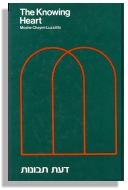
Translated by
Shraga Silverstein
Published in the Torah Classics Library by Feldheim Publishers
|
DA'ATH TEVUNOTH — THE KNOWING HEART is the second "step" after #1 THE WAY OF GOD in Rabbi Moshe Chaim Luzzatto's "ladder" of ascent and initiation into the secrets of the Kabbalah. THE KNOWING HEART, a philosophical work, is cast in the form of a dialogue between the Soul and the Intellect, explaining the meaning of the concept of the Oneness of God and why this and none other is the foundation upon which the entire creation is based.
In THE KNOWING HEART, as in THE WAY OF GOD, RAMCHAL does not employ Kabbalistic terminology. Yet he artfully prepares the student for its introduction in later stages of his "ladder" through this profound explanation of Kabbalah teachings about the creation of the universe, its purpose and destiny.
The top step of RAMCHAL's ladder, 138 Openings of Wisdom is currently being translated into English. |
| 7 |
Mystical Concepts in Chassidism
An Introduction to Kabbalistic Concepts and Doctrines
by Jacob Immanuel Schochet |
| |
|
Some grasp of the concepts and terminology of the "Lurianic system", the Kabbalah of the ARI, is necessary in order to navigate the literature of Kabbalah and Chassidus.
Mystical Concepts in Chassidism: An Introduction to Kabbalistic Concepts and Doctrines provides an excellent English-language explanation of the Lurianic system of the Kabbalah covering all its main terms and concepts by one of the leading Chabad scholars of our time.
published by Kehot Publication Society Brooklyn, New York |
| 8 |
Meditation and the Bible
by Rabbi Aryeh Kaplan |
| |
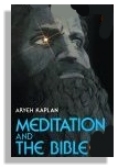
published by
Samuel Weiser
York Beach, Maine
|
One of the greatest mysteries of the Bible involves the methods used by the prophets to attain their unique states of consciousness. In this remarkable book, Rabbi Aryeh Kaplan draws from the entire spectrum of Kabbalistic literature, including many ancient unpublished manuscripts, to demonstrate how meditation played a key role in the methods of the prophets. All sources are cited and many of the more important texts are quoted verbatim in translation.
Combining these ancient Kabbalistic teachings with modern research into the theory of meditation, the author explores such areas as the prophetic position, the mystery of the Cherubs, the role of music, as well as the various disciplines and mantras employed by the prophets of the Bible. Of particular importance is the interpretation of Ezekiel's vision, which is the paradigm of the mystical experience, as well as the primary source of all subsequent Kabbalistic teachings. Biblical sources for the Ten Sefiort and Four Universes are discussed in detail. |
| 9 |
Meditation and Kabbalah
by Rabbi Aryeh Kaplan |
| |
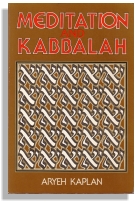
published by
Samuel Weiser
York Beach, Maine
|
MEDITATION AND KABBALAH clearly demonstrates how many advanced meditative techniques were used by the ancient Kabbalists, and explores their development in depth. This is a work of outstanding scholarship that provides a history of all the major schools and luminaries of the Kabbalah from Talmudic times until the modern era, together with a rich selection of translated source materials, commentary and discussion.
This is the first book in any language to reveal the methodology of the ancient kabbalists and stress the meditative techniques that were essential to their discipline. The work presents relevant portions of meditative texts such as the Greater Hekhalot, the writings of Rabbi Abraham Abulafia and Rabbbi Joseph Gikatalia, Gate of the Holy Spirit by Rabbi Chaim Vital, and important Chassidic meditative classics. |
| 10 |
Rabbi Nachman's Wisdom |
| |
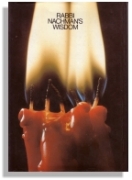
Translated and Annotated by
Rabbi Aryeh Kaplan
Published by
Breslov Research
Institute
Jerusalem, Israel
|
The crown — the tenth suggestion: teachings of Rabbi Nachman of Breslov (1772-1810), great grandson of the founder of the Chassidic movement, Rabbi Israel Baal Shem Tov.
The purpose of Chassidus was to forge a new pathway that would give everyone access to Kabbalistic mystical devotion, each on his own level. Rabbi Nachman possessed a unique power of being able to garb the deepest Kabbalistic concepts and devotions in the form of discourses, simple lessons, conversations and stories.
While this supreme mystic revealed and explained many Kabbalistic secrets, he put the pursuit of Kabbalistic knowledge in its proper perspective, teaching us not to try to be too wise, but to serve God with simplicity. He advised everyone to speak to God in their own words, calling this the highest level of devotion.
The teachings of Rabbi Nachman are recommended to all who seek the authentic way of the Kabbalah in our times.
Rabbi Nachman's Wisdom translated and Annotated by Rabbi Aryeh Kaplan, published by Breslov Research Institute, Jerusalem, Israel.
Rabbi Nachman's Advice translated by Avraham Greenbaum, published by Breslov Research Institute
Tzaddik: A Portrait of Rabbi Nachman by his leading student, Rabbi Nathan of Breslov, translated by Avraham Greenbaum, published by Breslov Research Institute.
Likutey Moharan: Collected Discourses of Rabbi Nachman. A multi-volume English translation with commentary by Rabbi Chaim Kramer, published by Breslov Research Institute. |
|
••••• |